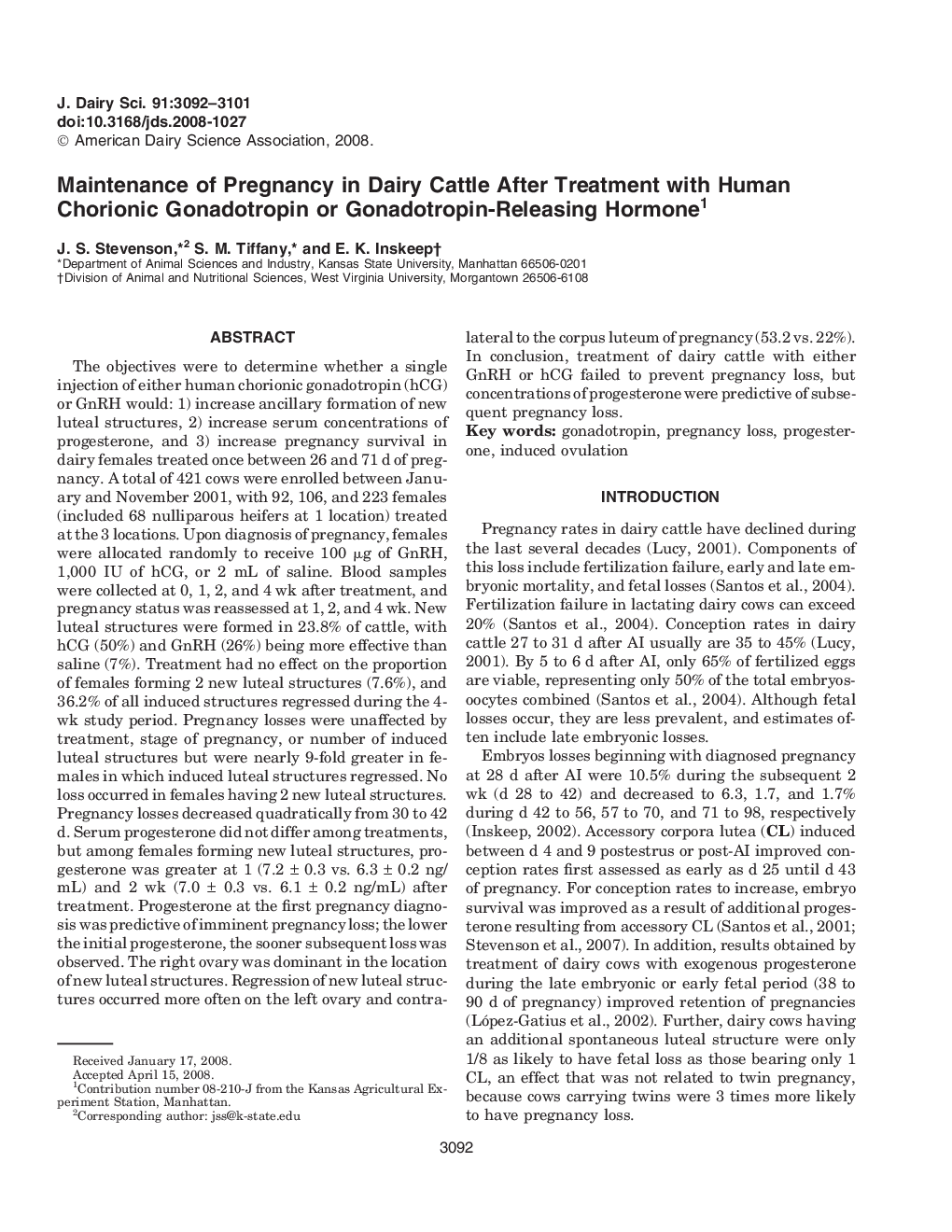| Article ID | Journal | Published Year | Pages | File Type |
|---|---|---|---|---|
| 2440137 | Journal of Dairy Science | 2008 | 10 Pages |
Abstract
The objectives were to determine whether a single injection of either human chorionic gonadotropin (hCG) or GnRH would: 1) increase ancillary formation of new luteal structures, 2) increase serum concentrations of progesterone, and 3) increase pregnancy survival in dairy females treated once between 26 and 71 d of pregnancy. A total of 421 cows were enrolled between January and November 2001, with 92, 106, and 223 females (included 68 nulliparous heifers at 1 location) treated at the 3 locations. Upon diagnosis of pregnancy, females were allocated randomly to receive 100 μg of GnRH, 1,000 IU of hCG, or 2 mL of saline. Blood samples were collected at 0, 1, 2, and 4 wk after treatment, and pregnancy status was reassessed at 1, 2, and 4 wk. New luteal structures were formed in 23.8% of cattle, with hCG (50%) and GnRH (26%) being more effective than saline (7%). Treatment had no effect on the proportion of females forming 2 new luteal structures (7.6%), and 36.2% of all induced structures regressed during the 4-wk study period. Pregnancy losses were unaffected by treatment, stage of pregnancy, or number of induced luteal structures but were nearly 9-fold greater in females in which induced luteal structures regressed. No loss occurred in females having 2 new luteal structures. Pregnancy losses decreased quadratically from 30 to 42 d. Serum progesterone did not differ among treatments, but among females forming new luteal structures, progesterone was greater at 1 (7.2 ± 0.3 vs. 6.3 ± 0.2 ng/ mL) and 2 wk (7.0 ± 0.3 vs. 6.1 ± 0.2 ng/mL) after treatment. Progesterone at the first pregnancy diagnosis was predictive of imminent pregnancy loss; the lower the initial progesterone, the sooner subsequent loss was observed. The right ovary was dominant in the location of new luteal structures. Regression of new luteal structures occurred more often on the left ovary and contra-lateral to the corpus luteum of pregnancy (53.2 vs. 22%). In conclusion, treatment of dairy cattle with either GnRH or hCG failed to prevent pregnancy loss, but concentrations of progesterone were predictive of subsequent pregnancy loss.
Related Topics
Life Sciences
Agricultural and Biological Sciences
Animal Science and Zoology
Authors
J.S. Stevenson, S.M. Tiffany, E.K. Inskeep,
